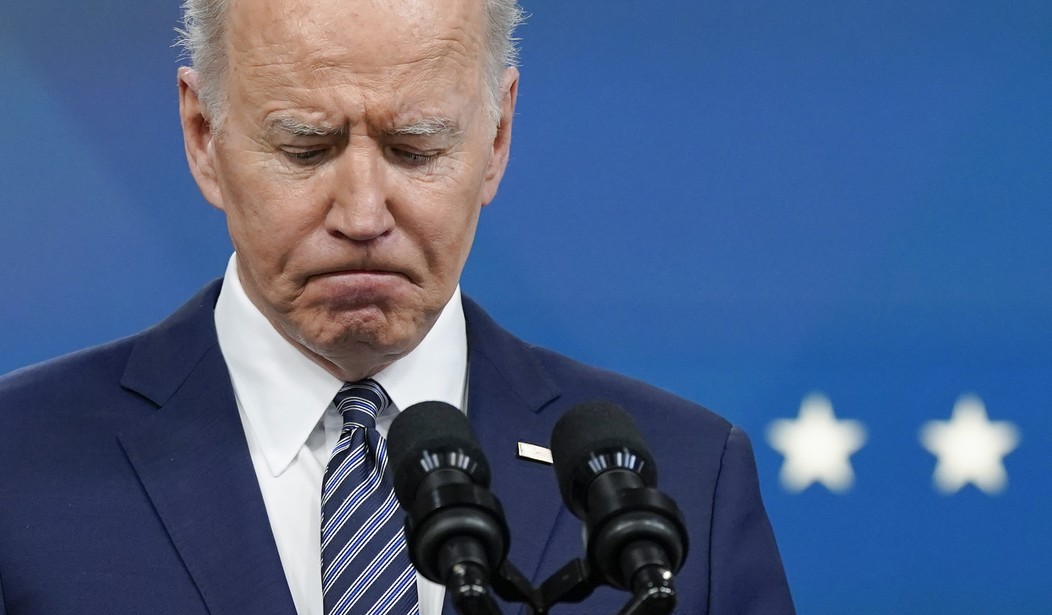Who suffers most from the erosion of buying power? Which households slow down spending first in an inflationary cycle? While the White House continues to point to consumer spending as an argument that their economic policies promote growth, the actual pattern of consumer spending tells a different story.
Last week, Washington Post economics analyst Heather Long called it the “have/have-not economy.” Yesterday, Associated Press reporters Anne D’Innocenzio and Christopher Rugaber provide even more evidence of regression in Bidenflation:
Americans at the low end of the income rung are once again struggling to make ends meet.
A confluence of factors — the expiration of federal stimulus checks and surging inflation on staples like gas and food — are driving an even bigger wedge between the haves and have-nots.
While wealthier shoppers continue to splurge, low-income shoppers have pulled back faster than expected in the past two months. They’re focusing on necessities while turning to cheaper items or less expensive stores. And they’re buying only a little at a time.
That’s still a tilted context. It was the government checks that helped spur the surging inflation that is creating the erosion in buying power. Economists warned at the time that Biden demanded that last tranche of its inflationary impacts, an obvious calculation that Janet Yellen conceded last week that the administration blew in March 2021. Married to Biden’s energy policies that explicitly aimed at curtailing exploration and extraction of oil and natural gas, those unnecessary stimulus checks provided a match to the economic kindling of a dozen years of monetary expansions, especially during the COVID-19 pandemic.
Overall spending is still up, but it’s now stratified and getting worse:
At the high end of the spectrum, Nordstrom and Ralph Lauren reported stronger-than-expected sales as their well-heeled shoppers returned to pre-pandemic routines. Lululemon also reported strong quarterly sales of its pricey athletic wear.
But on the other end, Walmart’s customers are switching to cheaper lunch meats and half gallons of milk from full gallons. Kohl’s, a mid-priced department store, said its customers were spending less on each visit. And Gap slashed its annual financial outlook, specifically citing the strain from inflation at its low-price Old Navy chain.
Both Dollar Tree and Dollar General, which historically benefit from shoppers trading down during difficult economic times, raised their sales outlooks last month. Meanwhile, discounter Big Lots suffered steep sales declines in the latest quarter, noting cutbacks in items like furniture.
The rich may or may not be getting richer, but they’re not getting poorer either — yet. The poor, on the other hand, are getting poorer despite nominal wage gains. The White House tried touting the 5.3% year-on-year wage gains shown in May’s jobs report, but even they acknowledged that it fell well below the 8.3% year-on-year inflation rate in current consumer price index (CPI), and CPI is only one aspect of inflation. The producer price index (PPI) has been in double digits for a couple of months now, coming in at 11% last month, which indicates that inflation will rage for at least the next few months.
The regressive impact of Bidenflation may not be contained to the working class and fixed-income households for long, either. Market Watch reported over the weekend that higher prices have seeped into the big-box retailers favored by middle-class shoppers, who might start tightening their pocketbooks too:
Middle-income consumers are finally starting to feel the squeeze from rising grocery prices.
In fact, for the first time in the past year, middle-income consumers — with a yearly income of $40,000 to $80,000 — recently overtook low-income shoppers as the group most affected by rising grocery prices, according to a report by consumer insights and data company Numerator.
Suburban consumers have also seen higher increases in groceries than urban and rural consumers. …
“Prices in today’s economy can represent real challenges to middle-class households,” said Darren Seifer, food and beverage industry analyst at The NPD Group. “Their income levels could be too low to afford discretionary purchases, while also too high to qualify for assistance programs like SNAP or WIC.”
“Since food and beverage purchases are a top priority, they might have to make tough decisions about what’s appropriate for their budgets,” he added. “They’ll likely cut back restaurant usage, and while shopping in grocery stores, we could see more of them look for items on sale, purchase less expensive cuts of meat, or look to store brands to manage their food expenditures.”
That’s the ol’ middle-class squeeze, and it’s only going to grow tighter as CPI and PPI continue to soar. Even if both moderate in the short run and inflation gets tamed — although that’s impossible to see at today’s energy prices without a serious recession — prices have outstripped wages so much that it will likely take a year or two for workers’ buying power to recover. The effects of overheated inflation do not end when the indicators return to normal, but when wages rise high enough to restore the buying power that inflation eroded.
The overall result of Bidenomics is that the only segment that benefits at all are the wealthy, and even that’s not so much benefit as it is a pre-existing cushion against the completely predictable results of idiotic economic and energy policies. The end result of progressive “equity” economics is even more stratification, although if left in place long enough, it might produce the equity that comes with utter economic collapse.








